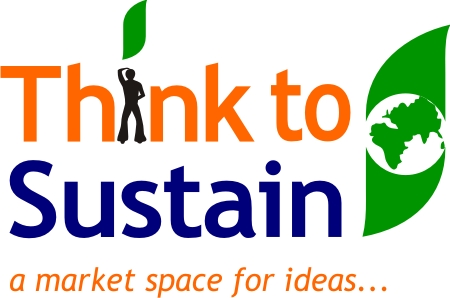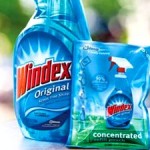 Outlines key initiatives in recycling, chemicals, fertilizers and energy efficiency
Outlines key initiatives in recycling, chemicals, fertilizers and energy efficiency- Broadens Index to international markets
- Index projected to include 300 product categories, engage up to 5,000 suppliers by end of year
Bentonville, Arkansas – In front of an audience of associates, suppliers and non-profit organizations at its Global Sustainability Milestone Meeting in September, Walmart highlighted its progress with the Sustainability Index, a measurement system used to track the environmental impact of products. The company also outlined key initiatives where it can use its size and scale to help address “hot spots” and accelerate progress in supply chain sustainability.
“We’ve reached an acceleration point where we are moving from measurement to results. We’re starting to really drive progress with the Index,” Walmart president and CEO Mike Duke said. “This is about trust and value. Using less energy, greener chemicals, fewer fertilizers and more recycled materials – all of this – is the right thing to do for the planet and its right for our customers and our business.”
As of September 12, the Index was rolled out across 200 product categories, and to more than 1,000 suppliers. By the end of this year, the company expects that the Index will expand to include more than 300 product categories and as many as 5,000 suppliers.
Since the Index rolled out broadly to Walmart product categories in August 2012, it has shown a consistent trend of improved product sustainability. For example, Walmart’s general merchandise department has improved its Index product sustainability score by an average of 20 percent; grocery department by an average of 12 percent; and consumables and health and wellness by an average of 6 percent.
“With the Sustainability Index, Walmart is applying the science and research that we’ve developed to create a more sustainable supply chain globally,” said Kara Hurst, CEO of The Sustainability Consortium. “We’re excited about the significant progress Walmart and its suppliers are making and value their partnership with us to address big issues and drive real social and environmental change.”
Based on the insights and data from the Index, Walmart has been working with suppliers, non-profits, industry experts and government to develop and implement solutions that address critical “hot spots” and opportunities across the global supply chain. As part of the progress update at the meeting, executives, merchants and suppliers shared progress on five major initiatives underway:
- Increasing the Use of Recycled Materials. More than 29 million tons of valuable plastics are sent to landfills every year in the U.S. at a cost of about $ 6.6 billion annually. Walmart aims to grow both the supply and demand for recycled plastics so they can be diverted from landfill and get a second life. The company is working with cities to increase plastic recycling and with suppliers to increase the use of recycled content and make packaging more recyclable. Changes in packaging are already being implemented in product categories such as beverage, over-the-counter drugs, dairy creamers and berry containers.
Earlier, Walmart and Sam’s Club also announced a smartphone trade-in program in the U.S. that went into effect on September 21. The company will not send these trade-ins to landfills, domestically or internationally, potentially saving hundreds of thousands of smartphones from landfills annually.
- Offering Products with Greener Chemicals. Walmart provided an overview of its new Consumables Chemicals initiative, describing how it is working with suppliers to reduce or eliminate the use of priority chemicals used in consumables products in favor of greener alternatives. It will begin with household cleaning, personal care, beauty and cosmetic products, asking suppliers to transition to greener substitutes for priority chemicals.
In addition, starting in January 2014, Walmart will begin to label its private brand cleaning products in accordance with the U.S. Environmental Protection Agency’s recommended Design for the Environment (DfE) Safer Product Labeling program, and will continue to assess the applicability of DfE as Walmart expands it to broader product areas.
- Reducing Fertilizer Use in Agriculture. Walmart is requiring suppliers who use commodity grains, such as corn, wheat and soy in their products, to develop a fertilizer optimization plan that outlines clear goals to improve performance based on Index research. Through this program, the company and its suppliers have the potential to reduce fertilizer use on 14 million acres of farmland in the U.S. by 2020.
- Expanding the Sustainability Index to International Markets. Walmart will expand the Sustainability Index and measurement to international markets with the goal of improving product sustainability at the global level. Walmart Chile and Walmart Mexico will launch the Index in their respective markets in 2014. In addition, South Africa’s Massmart has begun to include key Index questions in its supplier sustainability surveys.
- Improving Energy Efficiency. The Index has uncovered the importance of energy efficiency in several product categories, such as televisions, plastic toys, small appliances and greeting cards. By working with suppliers to improve energy efficiency through the supply chain of these products, Index energy scores have already improved 23 percent in general merchandise categories. Walmart is now providing tools for suppliers to help track and reduce the energy used to produce these products.
The company also announced a light-emitting diode (LED) lightbulb available in stores now under its Great Value label. A 40 watt equivalent bulb, which last more than twice as long as a compact fluorescent lightbulb (CFL), typically retails for $ 8.48 and the 60 watt equivalent $ 9.88. By selling 500,000 LED lightbulbs, the company projects customers can save more than $ 67 million over the lifetime of those bulbs.
Source: Walmart.
About Walmart
Wal-Mart Stores, Inc. (NYSE: WMT) is an American multinational retail corporation that runs chains of large discount department stores and warehouse stores. Walmart helps people around the world save money and live better in retail stores, online, and through their mobile devices. Each week, more than 245 million customers and members visit their 10,955 stores under 69 banners in 27 countries and e-commerce websites in 10 countries. With fiscal year 2013 sales of approximately $ 466 billion, Walmart employs more than 2 million associates worldwide. For more information, visit www.walmart.com.








